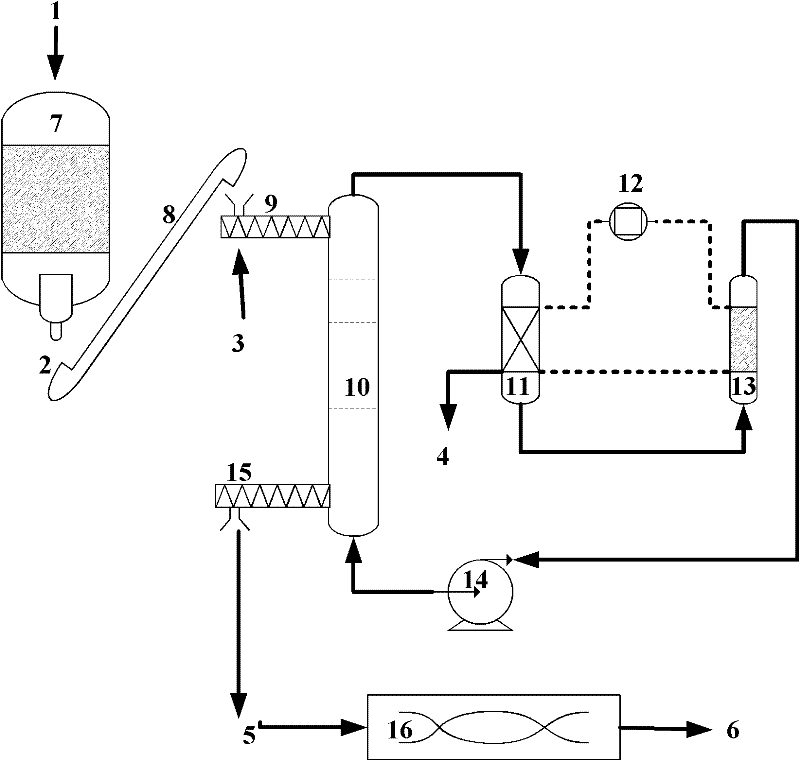Method for producing ethanol by continuous solid state fermentation of restaurant-kitchen garbage
A food waste and solid-state fermentation technology, applied in the field of waste resource utilization, can solve problems such as low production efficiency and secondary pollution, and achieve the effects of avoiding wastewater treatment, increasing degradation rate, and increasing concentration
- Summary
- Abstract
- Description
- Claims
- Application Information
AI Technical Summary
Problems solved by technology
Method used
Image
Examples
Embodiment 1
[0019] The food waste collected from a university canteen was first analyzed for its nutritional components. The analysis results showed that every 100g of dry food waste contained 13.6g of fat, 23g of total sugar, 12.5g of reducing sugar, 10.5g of non-reducing sugar, fiber Vegetables 12.1g. The food waste was subjected to steam explosion treatment in a 500L steam explosion tank 7 under the conditions of a temperature of 150° C. and a treatment time of 5 minutes. After the treatment is completed, add 4000U glucoamylase, 200IU cellulase, and 0.01g Angel high-temperature-resistant active dry yeast into the continuous solid-state fermentation reaction tower 10 through the screw feeder 9 according to the ratio of 4000U glucoamylase and 0.01g Angelica high-temperature-resistant active dry yeast. Start fermentation, control the temperature of the material in the continuous solid-state fermentation reaction tower at 35-37°C by controlling the flow rate of the Roots circulation fan 14...
Embodiment 2
[0021] The food waste collected from a hotel was first analyzed for its nutritional components. The analysis results showed that every 100g of food waste (dry weight) contained 14.3g of fat, 22.3g of total sugar, 12.1g of reducing sugar, and 10.2g of non-reducing sugar. g, cellulose 12.5g. The food waste was subjected to steam explosion treatment in a 500L steam explosion tank 7 under the conditions of a temperature of 155° C. and a treatment time of 4 minutes. After the treatment is completed, add 4000U of glucoamylase, 220IU of cellulase, and 0.015g of Angelic high-temperature-resistant active dry yeast for brewing wine into the continuous solid-state fermentation reaction tower 10 through the screw feeder 9 according to the ratio of 4000U of glucoamylase and yeast for every 100g of food waste. Start fermentation, control the temperature of the material in the continuous solid-state fermentation reaction tower at 35-37°C by controlling the flow rate of the Roots circulation ...
PUM
 Login to View More
Login to View More Abstract
Description
Claims
Application Information
 Login to View More
Login to View More - R&D
- Intellectual Property
- Life Sciences
- Materials
- Tech Scout
- Unparalleled Data Quality
- Higher Quality Content
- 60% Fewer Hallucinations
Browse by: Latest US Patents, China's latest patents, Technical Efficacy Thesaurus, Application Domain, Technology Topic, Popular Technical Reports.
© 2025 PatSnap. All rights reserved.Legal|Privacy policy|Modern Slavery Act Transparency Statement|Sitemap|About US| Contact US: help@patsnap.com

